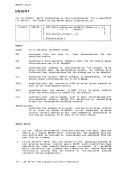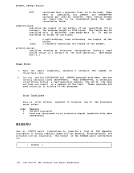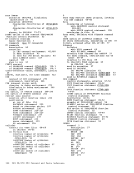DLBL
1.
logical unit assignmentr previously made with anASSGN command.
Specify theSYSxxx option on the first, or only, DLBL definition for a particular ddname. Many DLBL definitions may be associated
with the same logical unit. For example:
assgnsys100 b
dlbl ddl b cms test filel(sysl00 dlbl dd2 b cms test file2 (sys100 dlbl ddl cms test file3
is a valid command sequence.
2. The following special ddnames must be used to defineDOS private
libraries, and must be associated with the indicated logical units:IJSYSSL IJSYSRL IJSYSCL Logical !Inii __ _ SYSSLB SYSRLB SYSCLB 1ibra£y Source statement
Relocatable
Core image
These libraries must be identified in order to perform librarian
functions (with theSSEBV, ESERV, DSERV r or RSERV commands) for
private libraries; or to link-edit or fetch modules or phases from
private relocatable or core image libraries (with theDOSLKED and
FETCH commands).
3. EachDOS file has a CMS file identifier associated with it by
default; the filename is always FILE and the filetype isalways the
same as the ddname. For example, if you enter a DLBL command for aDOS file MOD.TEST.STREAM as follows:
dlbl test c dsn mod test stream
then you can refer to thisOS data set as FILE TEST when you use
theSTATE command: state file test When you enter a DLBL command specifying only a ddname and mode r as
follows:
dlbl junk aCMS assigns a file identifier of FILE JUNK Al to the ddname JUNK. 4. The FILEDEF command performs a function similar to that of the DLBL
command;you need to use the FILEDEF command in CMS/DOS only: • When you want to override a default ddname for an assembler
input or output file.• When you want to use the MOVEFILE command to process a file.
5. If you use theDUMMY operand, you must have issued an ASSGN command
specifying a device type ofIGN
r or ignore, for the SYSxxx unit
specified in the DLBL command, for example,Section 2. CMS Commands 63
1.
logical unit assignmentr previously made with an
Specify the
with the same logical unit. For example:
assgn
dlbl ddl b cms test filel
is a valid command sequence.
2. The following special ddnames must be used to define
libraries, and must be associated with the indicated logical units:
Relocatable
Core image
These libraries must be identified in order to perform librarian
functions (with the
private libraries; or to link-edit or fetch modules or phases from
private relocatable or core image libraries (with the
FETCH commands).
3. Each
default; the filename is always FILE and the filetype is
same as the ddname. For example, if you enter a DLBL command for a
dlbl test c dsn mod test stream
then you can refer to this
the
follows:
dlbl junk a
command;
input or output file.
5. If you use the
specifying a device type of
r
specified in the DLBL command, for example,






















































































































































































































































































































































































































